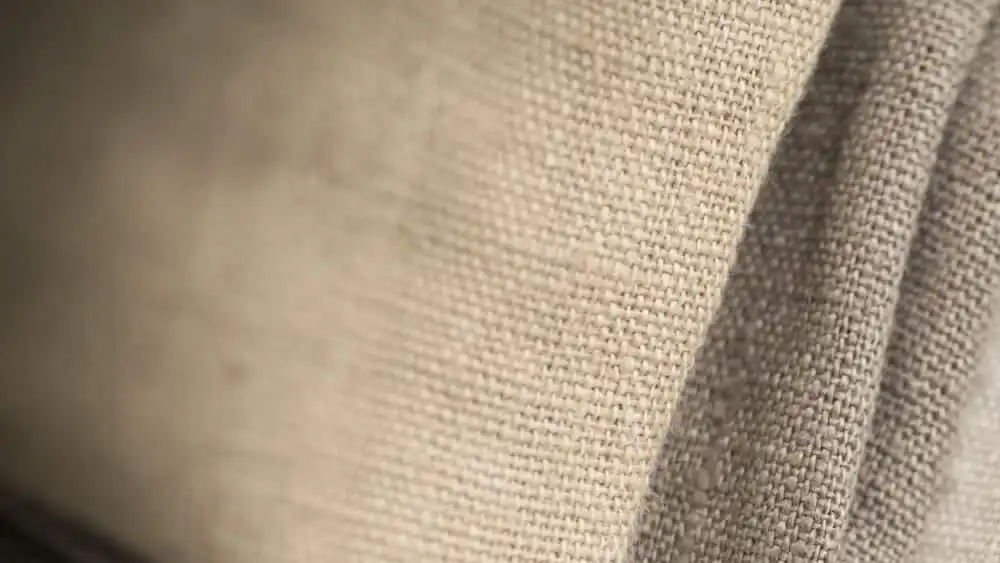Linen is a timeless and versatile natural fiber that has been used for centuries in various textile applications. Renowned for its exceptional breathability, durability, and elegant drape, linen fabric offers a wide range of options to suit different preferences and needs.
In this blog post, we’ll delve into the diverse types of linen fabric and explore their unique characteristics.
What Is Linen Fabric

Linen is a natural textile material that is derived from the fibers of the flax plant (Linum usitatissimum). It is one of the oldest and most versatile fabrics known to humanity, with a history dating back thousands of years.
1. Flax Linen
Flax linen is the most common and traditional form of linen fabric. It is derived directly from the fibers of the flax plant, which are harvested, retted, and then spun into yarn. Flax linen is known for its crisp, textured appearance and its ability to become softer with each wash. This type of linen is often used in clothing, bedding, and home decor items.
2. Irish Linen
Irish linen is a highly sought-after variety that is renowned for its exceptional quality and craftsmanship. Originating from the island of Ireland, this linen is produced using traditional techniques and is prized for its superior strength, smoothness, and lustrous finish. Irish linen is commonly used in high-end apparel, table linens, and luxury home textiles.
3. Belgian Linen
Belgian linen is another premium type that is known for its exceptional durability and refined appearance. Grown and processed in Belgium, this linen is often considered the gold standard in the industry. Belgian linen is renowned for its crisp, structured feel and is frequently used in upholstery, drapery, and high-end fashion.
4. Egyptian Linen
Egyptian linen is a unique variety that is grown and woven in the Nile Delta region of Egypt. This linen is characterized by its exceptionally fine and soft texture, which is a result of the ideal growing conditions and skilled craftsmanship. Egyptian linen is often used in luxury bedding, apparel, and home decor items.
5. Ramie Linen
Ramie linen, also known as “Chinese linen,” is a hybrid fabric that combines the natural properties of linen with the added benefits of the ramie plant. Ramie linen is known for its exceptional strength, breathability, and resistance to wrinkles. This type of linen is commonly used in clothing, upholstery, and industrial applications.
Regardless of the specific type, linen fabric offers a unique and timeless appeal that has made it a favorite among discerning consumers. Whether you’re seeking the crisp elegance of flax linen, the luxurious softness of Egyptian linen, or the exceptional durability of Belgian linen, the world of linen textiles has a variety to suit every taste and need.
Caring for Linen Fabric
Proper care and maintenance are crucial to preserving the exceptional qualities of linen fabric. Here are some tips for caring for your linen items:
- Washing: Linen fabrics should be washed in cool or lukewarm water using a gentle detergent. Avoid using hot water, as it can cause linen to shrink or lose its shape. Opt for a gentle wash cycle or hand-wash for delicate linen items.
- Drying: Line drying or low-heat tumble drying are the best methods for drying linen. Avoid high heat, as it can damage the fibers and lead to excessive wrinkling. If line drying, hang the linen items in the shade to prevent fading from direct sunlight.
- Ironing: Linen fabrics respond well to ironing, which helps to smooth out wrinkles and restore the crisp, structured appearance. Use a medium to high heat setting and iron the fabric while it is still slightly damp.
- Storage: Store linen items in a cool, dry place, away from direct sunlight. Fold or hang the fabrics to prevent creasing and maintain their shape.
By following these simple care guidelines, you can ensure that your linen fabrics remain vibrant, durable, and true to their exceptional quality for years to come.
Conclusion
Linen fabric offers a diverse range of options, each with its own unique characteristics and applications. From the classic flax linen to the luxurious Egyptian and the durable Belgian varieties, the world of linen textiles provides endless possibilities for discerning consumers. By understanding the nuances of each type, you can make informed choices and incorporate the timeless elegance of linen into your wardrobe, home decor, and lifestyle.
